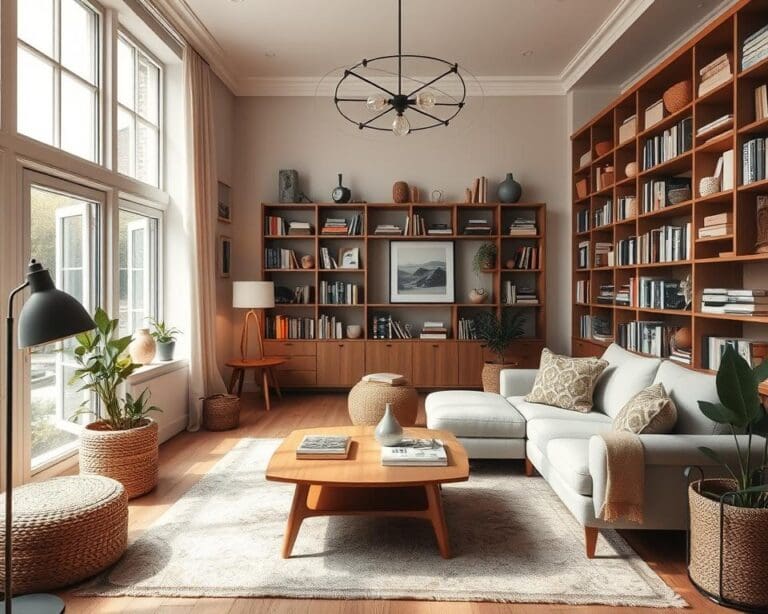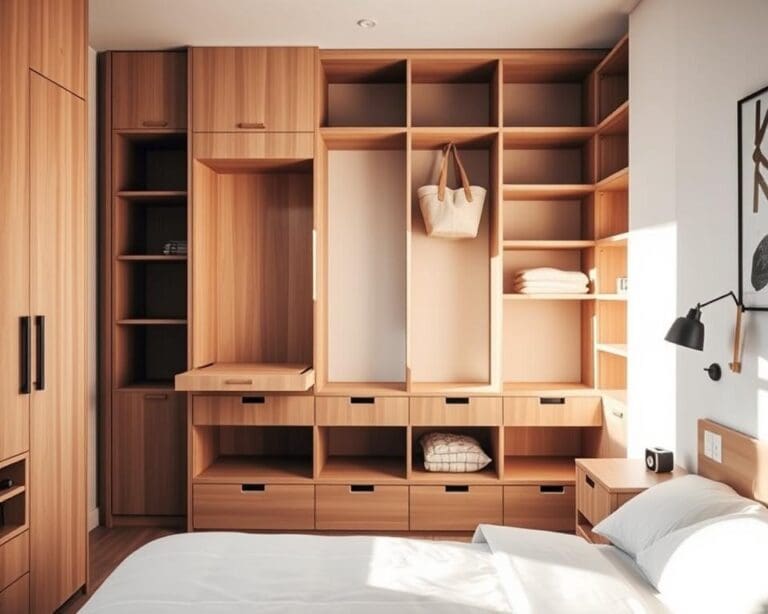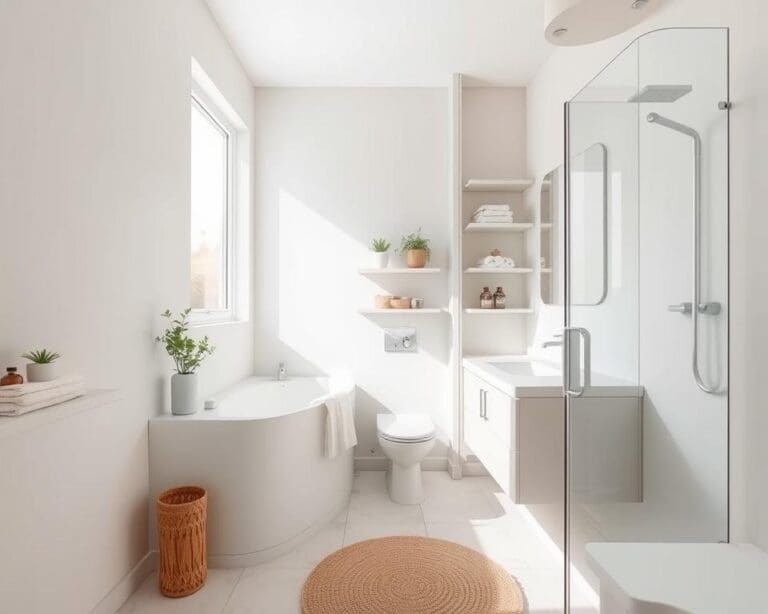Embarking on a home renovation doesn’t have to mean emptying your wallet. With careful renovation planning and a focus on cost-effective renovation strategies, you can achieve stunning results even on a small budget. Recent studies from the Office for National Statistics reveal a significant rise in home improvements, particularly when economic uncertainties prompt homeowners to enhance their living spaces without incurring hefty expenses. This article will inspire you to prioritise impactful changes that look remarkable yet won’t strain your finances.
Understanding Your Budget for Home Renovation
Embarking on a home renovation journey requires careful financial planning. Establishing a clear home renovation budget enables homeowners to manage costs effectively while ensuring that their dreams are realised. Realistic budgeting involves not only knowing how much money is available but also comprehending the full scope of expenses that may arise.
Setting a Realistic Budget
Begin by analysing your current financial situation to determine how much can be allocated for the renovation. Take into account savings as well as potential borrowing options. It may be beneficial to use budgeting tools or apps such as HomeZada or BudgetTracker, which provide a structured way to monitor and adjust your renovation expenses throughout the project.
Identifying Key Expenses
A comprehensive cost breakdown is vital in understanding where your money will go. Key expenses to consider include:
- Labour costs for contractors and tradespeople
- Materials and supplies for the project
- Permits required for construction work
- Contingency funds for unexpected costs that may emerge during renovations
By clearly identifying these expenses, homeowners can approach their renovation with confidence, ensuring a smoother process as well as minimising the risk of financial surprises.
Researching Cost-Effective Renovation Ideas
Embarking on a home renovation does not need to drain your finances. Exploring cost-effective renovations can transform your space without requiring a hefty budget. DIY home projects provide an excellent avenue for creativity, allowing homeowners to add personal touches while keeping expenses in check. A plethora of ideas exists that can uplift your home simply and affordably.
Exploring DIY Opportunities
The popularity of DIY home projects has surged in recent years, with many homeowners undertaking tasks that were once reserved for professionals. Simple activities like painting a room or landscaping a garden can dramatically change the look of your home. Upcycling furniture is another fantastic way to add character while being budget-conscious. A personal touch can turn an ordinary item into a statement piece.
Utilising Online Resources for Inspiration
In the digital age, finding renovation inspiration has never been easier. Platforms such as Pinterest and various home improvement blogs can spark ideas for your next project. YouTube channels often feature tutorials that guide you step-by-step through a myriad of DIY tasks. Websites dedicated to DIY enthusiasts, such as HomeTalk, showcase projects that inspire creativity and innovation, making them essential resources for anyone embarking on cost-effective renovations.
How do you plan a home renovation on a small budget?
Effective renovation planning starts with identification and prioritisation of essential renovations that will provide the most significant impact. Focusing on improvements in critical areas, such as kitchens and bathrooms, can enhance not only everyday living but also overall property value. By addressing these essential renovations first, homeowners can maximise their investment while staying within budget.
Prioritising Essential Renovations
Determining which renovations hold the highest priority sets the tone for the entire project. Considerations should include:
- Assessing the condition of existing spaces
- Evaluating the potential return on investment
- Focusing on upgrades that improve safety and functionality
For instance, a kitchen remodel can dramatically increase a home’s value, making it a wise choice for any renovation action plan.
Creating a Renovation Action Plan
A comprehensive renovation action plan plays a crucial role in successful project execution. This plan should outline specific tasks, deadlines, and resource allocations. Take advantage of project management tools such as Gantt charts to organise tasks and keep the project on track. Assigning responsibilities will ensure that every aspect of the renovation is covered, preventing overlooked details that could derail the budget.
Smart Shopping for Materials and Supplies
Effective sourcing of renovation supplies plays a crucial role in staying within budget during a home renovation. Engaging in smart shopping can reveal various opportunities to find affordable materials without compromising quality. By exploring various resources and strategically timing purchases, you can significantly reduce your overall renovation costs.
Where to Find Affordable Materials
One of the best ways to maximise savings is to scout local reclamation yards and online marketplaces such as Gumtree. These platforms often feature a range of materials at lower prices, sometimes even offering nearly new items that can seamlessly fit into your renovation plans. DIY enthusiasts might also discover hidden treasures at discount retailers such as B&Q or Screwfix, where deals on renovation supplies abound. Regular visits can lead to uncovering the most attractive offers.
Timing Your Purchases for Maximum Savings
Understanding the right time to purchase renovation supplies can yield significant savings. Keeping an eye on end-of-season sales or special promotional events can provide the perfect opportunity to secure essential items at greatly reduced prices. Shops may offer double discount days where additional savings apply to already low-priced materials, making it an ideal time to make your purchases. By planning ahead and being patient, you can optimise your budget and bring your renovation vision to life.
Hiring Professionals Wisely
Embarking on a home renovation project requires a careful consideration of whether to engage in DIY tasks or seek the expertise of professionals. Understanding when to take the DIY approach versus hiring professionals can save time and minimise potential hazards, particularly for complex jobs. Certain tasks, such as electrical wiring or plumbing, necessitate skilled tradespeople due to safety regulations and specialised knowledge.
When to Go DIY versus Hiring Help
DIY projects can be exhilarating and cost-effective. Embrace tasks within your skill set, such as painting or landscaping. For more intricate or hazardous tasks, the value of hiring professionals significantly outweighs the expense. Key signs that it’s wise to hire professionals include:
- Unfamiliarity with the task or lack of skills
- Complexity that requires specialised tools or knowledge
- Local building codes and regulations that mandate licensed work
Finding Affordable Tradespeople
When the need arises for hiring professionals, finding affordable and reliable tradespeople can be achieved through various methods. Relying on community networks or local recommendations often leads to trustworthy options. Consider these effective strategies:
- Engage with local community groups on social media for recommendations.
- Utilise platforms such as Rated People or Checkatrade to source qualified tradespeople.
- Consult local trade associations for vetted professionals.
Maximising Space on a Budget
Transforming a space without breaking the bank requires thoughtful strategies focused on efficiency and creativity. Implementing space maximisation techniques is essential for making the most of limited square footage while ensuring both functionality and aesthetic appeal.
Incorporating Multi-Functional Furniture
Choosing multi-functional furniture can significantly enhance space maximisation. Items such as:
- Sofa beds that provide comfortable seating by day and a sleeping area by night.
- Extendable dining tables suitable for everyday use that can accommodate guests during special occasions.
- Storage ottomans, which offer a stylish way to store blankets, books, or toys while providing extra seating.
These versatile solutions allow homeowners to enjoy more flexibility in their interiors without the need for extensive renovations.
Smart Layout Changes That Save Money
Effective layout changes can breathe new life into a room. Simple adjustments, such as:
- Rearranging furniture to create open pathways, improving flow within the space.
- Utilising vertical storage solutions to free up floor space while keeping the area organised.
- Incorporating mirrors to reflect light and create an illusion of depth, making a room feel larger.
These layout changes allow for a refreshed look at minimal cost, enhancing both the functionality and visual appeal of any room.
Incorporating Sustainable Practices
The growing trend of sustainable renovation encourages homeowners to be mindful of their environmental impact while enhancing their living spaces. By integrating practices such as upcycling and selecting eco-friendly materials, individuals can create beautiful, functional homes without compromising their values or budgets.
Upcycling and Repurposing Existing Materials
Upcycling offers a creative approach to home renovation that reduces waste and saves money. Rather than discarding old furniture or materials, consider transforming them into unique pieces. This not only promotes sustainability but also adds character to your home. Engaging with local upcycling communities can provide valuable insights and inspiration.
Choosing Eco-Friendly Yet Affordable Options
Opting for eco-friendly materials is vital in achieving an environmentally conscious renovation. Materials such as bamboo flooring or recycled glass countertops provide attractive and sustainable alternatives. These options often come at competitive prices, allowing for a stylish design that aligns with a sustainable ethos. Emphasising affordability alongside sustainability creates an inviting and responsible living environment.
Documenting the Renovation Journey
Embarking on a home renovation can be both an exciting and challenging experience. Documenting your renovation journey not only allows you to track progress but also provides a platform to share your insights and findings. Through renovation documentation, homeowners can capture the transformation of their spaces, offering valuable reflections on the choices made throughout the project. This record serves as a personal archive of homeowner experiences, which can be revisited for inspiration in future projects.
Social media platforms like Instagram, along with home improvement forums, have become popular venues for project recording. By showcasing before and after photos and narrating the decision-making processes, renovators can foster a sense of community among like-minded individuals. Sharing your journey opens the door for connections with fellow homeowners who may offer support, advice, or simply the validation that comes from understanding shared challenges.
The importance of capturing each step in the renovation odyssey should not be underestimated. It offers lessons not just for yourself, but for others contemplating similar endeavours. In the end, your documented journey could inspire others to embrace their dream renovations, showcasing that with creativity and dedication, transformations are entirely possible on any budget.









